From inside (document excerpt):
A Word to Mazda Owners Thank you for choosing a Mazda. We at Mazda design and build vehicles with complete customer satisfaction in mind. To help ensure enjoyable and trouble-free operation of your Mazda, read this manual carefully and follow its recommendations. An Authorized Mazda Dealer knows your vehicle best. So when maintenance or service is necessary, that’s the place to go. Our nationwide network of Mazda professionals is dedicated to providing you with the best possible service. We assure you that all of us at Mazda have an ongoing interest in your motoring pleasure and in your full satisfaction with your Mazda product.
User and Operator’s Vehicle Manual Guide. Free Auto PDF Manual Download. Years covered by this manual: 2007.
Mazda Motor Corporation HIROSHIMA, JAPAN Important Notes About This Manual Keep this manual in the glove box as a handy reference for the safe and enjoyable use of your Mazda. Should you resell the vehicle, leave this manual with it for the next owner. All specifications and descriptions are accurate at the time of printing. Because improvement is a constant goal at Mazda, we reserve the right to make changes in specifications at any time without notice and without obligation. Event Data Recorder This vehicle is equipped with an event data recorder. In the event of a crash, this device records data related to vehicle dynamics and safety systems for a short period of time. These data can help provide a better understanding of the circumstances in which crashes and injuries occur and lead to the designing of safer vehicles. Air Conditioning and the Environment Your Mazda’s genuine air conditioner is filled with HFC134a (R134a), a refrigerant that has been found not to damage the earth’s ozone layer. If the air conditioner does not operate properly, consult an Authorized Mazda Dealer. Please be aware that this manual applies to all models, equipment and options. As a result, you may find some explanations for equipment not installed on your vehicle. 2005 Mazda Motor Corporation Printed in Japan Apr. 2005(Print1) How to Use This Manual We want to help you get the most driving pleasure from your vehicle. Your owner’s manual, when read from cover to cover, can do that in many ways. Illustrations complement the words of the manual to best explain how to enjoy your Mazda. By reading your manual, you can find out about the features, important safety information, and driving under various road conditions. The symbol below in this manual means “Do not do this ” or “Do not let this happen “. NOTE A NOTE provides information and sometimes suggests how to make better use of your vehicle. The symbol below, located on some parts of the vehicle, indicates that this manual contains information related to the part. Please refer to the manual for a detailed explanation. Index: A good place to start is the Index, an alphabetical listing of all information in your manual. You’ll find several WARNINGs, CAUTIONs, and NOTEs in the manual. WARNING A WARNING indicates a situation in which serious injury or death could result if the warning is ignored. CAUTION A CAUTION indicates a situation in which bodily injury or damage to your vehicle, or both, could result if the caution is ignored. Table of Contents Your Vehicle at a Glance Interior, exterior views and part identification of your Mazda. 11 Essential Safety Equipment Use of safety equipment, including seats, seat belt system, SRS air bags and child-restraint systems. Knowing Your Mazda Explanation of basic operations and controls; opening/closing and adjustment of various parts. Before Driving Your Mazda Important information about driving your Mazda. Driving Your Mazda Explanation of instruments and controls. Interior Comfort Use of various features for drive comfort, including air-conditioning and audio system. In Case of an Emergency Helpful information on what to do in an emergency. Maintenance and Care How to keep your Mazda in top condition. Customer Information Important consumer information including warranties and add-on equipment. Specifications Technical information about your Mazda. Index Navigation System 1 Your Vehicle at a Glance Interior, exterior views and part identification of your Mazda. Dashboard and Interior Overview 1-2 Exterior Overview . 1-4 1-1 Your Vehicle at a Glance Dashboard and Interior Overview * * * The equipment and installation position varies according to model and grade. *Refer to Navigation System at the end of the manual. 1-2 Your Vehicle at a Glance Dashboard and Interior Overview Power window lock switch page 3-14 Power window switches page 3-13 Power door lock switch . page 3-9 Hood release handle page 3-16 Lighting control/Turn signals page 5-43 Instrument cluster page 5-27 Air bags . page 2-38 Hazard warning flasher switch page 5-51 Wiper and washer lever . page 5-46 Information display page 6-54 Audio system . page 6-17 Climate control system page 6-2 Accessory socket . page 6-63 Center console . page 6-59 Parking brake . page 5-5 AT shift lever (Sport AT) . page 5-11 MT shift lever page 5-9 Cruise control switches page 5-17 Ignition switch . page 5-2 Steering column release lever page 3-24 Audio control switch . page 6-47 Remote fuel-filler lid release . page 3-15 Outside mirror switch page 3-24 Interior light . page 6-51 Seat belt . page 2-14 Sunvisor . page 6-51 Map light . page 6-52 Rearview mirror . page 3-25 Vanity mirror page 6-51 Glove box page 6-59 Front seats page 2-2 Cup holder . page 6-57 Second-row seat . page 2-5 Third-row seat page 2-11 1-3 Your Vehicle at a Glance Exterior Overview The equipment and installation position varies according to model and grade. 1-4 Your Vehicle at a Glance Exterior Overview Rear window defroster . page 5-50 Rear wiper blade page 8-25 Light bulbs . page 8-34 Liftgate . page 3-11 Antenna . page 6-17 Fuel-filler lid page 3-15 Sliding doors page 3-9 Power windows . page 3-13 Outside mirror page 3-24 Child safety locks page 3-10 Tires . page 8-29 Hood page 3-16 Windshield wiper blades page 8-23 Moonroof . page 3-17 Doors and keys page 3-7 1-5 1-6 2 Essential Safety Equipment Use of safety equipment, including seats, seat belt system, SRS air bags and child-restraint systems. Seats . 2-2 Front Seats 2-2 Second-Row Seats 2-5 Third-Row Seat . 2-11 Seat Belt Systems Seat Belt Precautions Seat Belts Front Seat Belt Pretensioner and Load Limiting Systems . Seat Belt Extender . Seat Belt Warning Light/Beep Child Restraint Child Restraint Precautions . Installing Child-Restraint Systems LATCH Child-Restraint Systems SRS Air Bags . Supplemental Restraint Systems (SRS) Precautions . Supplemental Restraint System Components . How the Air Bags Work 2-14 2-14 2-17 2-19 2-21 2-22 2-24 2-24 2-28 2-35 2-38 2-38 2-43 2-46 2-1 Essential Safety Equipment Seats Front Seats qSeat Slide WARNING Modification of the Front Seats: Modifying or replacing the front seats such as replacing the upholstery or loosening any bolts is dangerous. The front seats contain air bag components essential to the supplemental restraint system. Such modifications could damage the supplemental restraint system and result in serious injury. Consult an Authorized Mazda Dealer if there is any need to remove or reinstall the front seats. Damaged Front Seats: Driving with damaged front seats is dangerous. A collision, even one not strong enough to inflate the air bags, could damage the front seats which contain essential air bag components. If there was a subsequent collision, the air bag may not deploy which could lead to injuries. Always have an Authorized Mazda Dealer inspect the front seats, front seat belt pretensioners and air bags after a collision. Securing the Seats: Adjustable seats and seatbacks that are not securely locked are dangerous. In a sudden stop or collision, the seat or seatback could move, causing injury. Make sure the adjustable components of the seat are locked in place by attempting to slide the seat forward and backward and rocking the seatback. WARNING Driver’s Seat Adjustment: Adjusting the driver’s seat while the vehicle is moving is dangerous. The driver could lose control of the vehicle and have an accident. Adjust the driver’s seat only when the vehicle is stopped. To move a seat forward or backward, raise the lever and slide the seat to the desired position and release the lever. Make sure the lever returns to its original position and the seat is locked in place by attempting to push it forward and backward. 2-2 Essential Safety Equipment Seats qSeat Recline To change the seatback angle, lean forward slightly while raising the lever. Then lean back to the desired position and release the lever. WARNING Reclining: Sitting in a reclined position while the vehicle is moving is dangerous because you don’t get the full protection from seat belts. During sudden braking or a collision, you can slide under the lap belt and suffer serious internal injuries. For maximum protection, sit well back and upright. Unlocked Seatback: The seatback plays an important role in your protection in a vehicle. Leaving the seatback unlocked is dangerous as it can allow passengers to be ejected or thrown around and baggage to strike occupants in a sudden stop or collision, resulting in severe injury. After adjusting the seatback at any time, even when there are no other passengers, rock the seatback to make sure it is locked in place. Make sure the lever returns to its original position and the seatback is locked in place by attempting to push it forward and backward. CAUTION When returning a rear-reclined seatback to its upright position, make sure you hold onto the seatback with your other hand while operating the lever. If the seatback is not supported, it will flip forward suddenly and could cause injury. 2-3 Essential Safety Equipment Seats qHeight Adjustment (Driver’s Seat) By moving the seat lever up or down, the seat bottom height can be adjusted. Up qHead Restraint WARNING Head Restraints Adjustment: Driving with the head restraints adjusted too low or removed is dangerous. With no support behind your head, your neck could be seriously injured in a collision. Always drive with the head restraints inserted when seats are being used and make sure they are properly adjusted. To raise a head restraint, pull it up to the desired position. To lower the head restraint, press the stopcatch release, then push the head restraint down. Down qLumbar Support Adjustment (Driver’s Seat) To adjust the lumbar support, pull the lever forward. Adjust the head restraint so that the top is even with the top of the passenger’s ears, never the passenger’s neck. 2-4 Essential Safety Equipment Seats qArmrest (Driver’s Seat) The armrest can be used or placed upright. Second-Row Seats WARNING Stacking Cargo: Stacking luggage or other cargo higher than the seatback is dangerous. During a sudden stop or collision, objects can fly around and become projectiles that could hit and injure passengers. Don’t stack cargo higher than the seatback. Not Securing Luggage and Cargo: Not securing cargo while driving is dangerous as it could move or be crushed during sudden braking or a collision and cause injury. Make sure luggage and cargo is secured before driving. Securing Seats: Adjustable seats that are not securely latched are dangerous. In a sudden stop or collision, the seat or seatback could move, causing injury. Make sure the adjustable components of the seat are locked in place by attempting to slide the seat forward and backward and rocking the seatback. Seat Adjustment: Adjusting the seat while the vehicle is moving is dangerous. Sudden braking or a collision could cause serious injury. Adjust the seat only when the vehicle is stopped. WARNING Positioning the Shoulder Belt Over the Armrest: Positioning the shoulder portion of a front seat belt over the armrest is dangerous as it cannot provide adequate protection in a collision and could result in serious injuries. Never position the shoulder portion of a front seat belt over the armrest. 2-5 Essential Safety Equipment Seats NOTE l WARNING Unlocked Seatback: The seatback plays an important role in your protection in a vehicle. Leaving the seatback unlocked is dangerous as it can allow passengers to be ejected or thrown around and baggage to strike occupants in a sudden stop or collision, resulting in severe injury. After adjusting the seatback at any time, even when there are no other passengers, rock the seatback to make sure it is locked in place. Passenger on the Folded Seatback: Driving with a passenger on the folded seatback is dangerous. Allowing a child to sit on the folded seatback while the vehicle is moving is particularly dangerous. During sudden braking or even a minor collision, a child not restrained in a proper seat or child-restraint system and seat belt could be thrown forward, back or even out of the car resulting in serious injuries or death. The child in the cargo area could be thrown into other occupants and cause serious injury. Never allow a passenger to sit or stand on the folded seatback while the vehicle is …..
required by law. 9-15 Customer Information Uniform Tire Quality Grading System (UTQGS) WARNING The temperature grade for this tire is established for a tire that is properly inflated and not overloaded. Excessive speed, underinflation, or excessive loading, either separately or in combination, can cause heat buildup and possible tire failure. These grades will be added to the sidewalls of passenger vehicle tires over the next several years according to a schedule established by the NHTSA and the tire manufacturers. The grade of tires available as standard or optional equipment on Mazda vehicles may vary with respect to grade. ALL PASSENGER VEHICLE TIRES MUST CONFORM TO THESE GRADES AND TO ALL OTHER FEDERAL TIRE-SAFETY REQUIREMENTS. qUniform Tire Quality Grading Quality grades can be found where applicable on the tire sidewall between tread shoulder and maximum section width. For example: Treadwear 200 Traction AA Temperature A UTQGS MARK (example) TREADWEAR 200 TRACTION AA TEMPERATURE A 9-16 Customer Information Reporting Safety Defects Reporting Safety Defects (U.S.A.) If you believe that your vehicle has a defect which could cause a crash or could cause injury or death, you should immediately inform the National Highway Traffic Safety Administration (NHTSA) in addition to notifying Mazda Motor Corporation (Your Mazda Importer/Distributor). If NHTSA receives similar complaints, it may open an investigation, and if it finds that a safety defect exists in a group of vehicles, it may order a recall and remedy campaign. However, NHTSA cannot become involved in individual problems between you, your dealer, or Mazda Motor Corporation (Your Mazda Importer/Distributor). To contact NHTSA, you may either call the Auto Safety Hotline toll-free at 1 (800) 424-9393 (or 366-0123 in Washington, D.C. area) or write to: NHTSA, U.S. Department of Transportation. Washington, D.C. 20590. You can also obtain other information about motor vehicle safety from the Hotline. NOTE If you live in the U.S.A., all correspondence to Mazda Motor Corporation should be forwarded to: Mazda North American Operations 7755 Irvine Center Drive Irvine, California 92618-2922 P.O. Box 19734 Irvine, CA 92623-9734 Customer Assistance Center or toll free at 1 (800) 222-5500 If you live outside of the U.S.A., please contact the nearest Mazda Distributor shown (page 9-8) in this booklet. 9-17 Customer Information Reporting Safety Defects Reporting Safety Defects (Canada) Canadian customers who wish to report a safety-related defect to Transport Canada, Defect Investigations and Recalls, may telephone the toll free hotline 1-800-333-0510, or contact Transport Canada by mail at: Transport Canada, ASFAD, Place de Ville Tower C, 330 Sparks Street, Ottawa ON K1A 0N5. For additional road safety information, please visit the Road Safety website at: http://www.tc.gc.ca/roadsafety/menu.htm 9-18 Customer Information Service Publications Service Publications Factory-authorized Mazda service publications are available for owners who wish to do some of their own maintenance and repair. When requesting any of our publications through an Authorized Mazda Dealer, refer to the chart below. If they don’t have what you need in stock, they can order it for you. PUBLICATION ORDER NUMBER 9999-95-012B-06 9999-95-074G-06 9999-95-005C-06 (U.S.A. only) 9999-EC-005C-06 (Canada only) 9999-PR-005C-06 (Puerto Rico only) PUBLICATION DESCRIPTION 2006 WORKSHOP MANUAL (English) 2006 WIRING DIAGRAM (English) 2006 OWNER’S MANUAL 2006 OWNER’S MANUAL 2006 OWNER’S MANUAL qWORKSHOP MANUAL: Covers recommended maintenance and repair procedures of the drive train, body and chassis. qWIRING DIAGRAM: Provides electrical schematics as well as component location for the entire electrical system. qOWNER’S MANUAL: This booklet contains information regarding the proper care and operation of your vehicle. This is not a technician’s manual. 9-19 9-20 10 Specifications Technical information about your Mazda. Identification Numbers . 10-2 Vehicle Information Labels . 10-2 Specifications . 10-4 Specifications 10-4 10-1 Identification Numbers Vehicle Information Labels qVehicle Identification Number The vehicle identification number legally identifies your vehicle. The number is on a plate attached to the left top side of the dashboard. This plate can easily be seen through the windshield. qChassis Number qVehicle Emission Control Information Label qMotor Vehicle Safety Standard Label qTire Pressure Label 10-2 Identification Numbers qEngine Number Forward 10-3 Specifications Specifications qEngine Item Type Bore×Stroke Displacement Compression ratio Specification DOHC-16V in-line, 4-cylinder 87.5 × 94.0 mm (3.44 × 3.70 in) 2,261 ml (2,261 cc, 137.9 cu in) 9.7 qElectrical System Item Battery Alternator Starter Spark-plug number Spark-plug gap * ex factory Classification 12V-40AH/5HR, 12V-55AH/5HR 12 V – 90 A 12 V – 1.4 kW L303 18 110* 1.251.35 mm (0.0490.053 in) CAUTION When cleaning the iridium plugs, do not use a wire brush. The fine particulate coating on the iridium alloy and platinum tips could be damaged. qLubricant Quality Lubricant Engine oil Any temperature Manual transaxle oil Above 10°C (50°F) Automatic transaxle fluid Power steering fluid Brake/Clutch fluid Classification Refer to the recommended SAE viscosity numbers on page 8-11. API Service GL-4 or GL-5 SAE 75W-90 API Service GL-4 or GL-5 SAE 80W-90 ATF M-V ATF M-III or equivalent (e.g. Dexron® II) SAE J1703 or FMVSS116 DOT-3 10-4 Specifications qCapacities (Approximate Quantities) Item Engine oil Coolant Manual transaxle oil Automatic transaxle fluid Fuel tank Check oil and fluid levels with dipsticks or reservoir gauges. With oil filter replacement Without oil filter replacement L 4.3 3.9 7.0 2.87 7.2 60 Unit US qt Imp qt 4.5 3.8 4.1 3.4 7.4 6.2 3.03 2.53 7.6 6.3 15.9 (US gal) 13.2 (Imp gal) qDimensions Item Overall length Overall width Overall height Front tread Rear tread Wheelbase Vehicle specification 4,610 mm (181.5 in) 1,755 mm (69.1 in) 1,630 mm (64.2 in) 1,530 mm (60.2 in) 1,515 mm (59.6 in) 2,750 mm (108.3 in) qWeights Item GVWR (Gross Vehicle Weight Rating) GAWR (Gross Axle Weight Rating) Front Rear Weight 2,074 kg (4,572 lb) 1,006 kg (2,218 lb) 1,068 kg (2,355 lb) qAir Conditioner Gas complies with SAE J639 HFC134a (R-134a) Maximum operating charge 0.5 kg (17.55 oz) 10-5 Specifications qLight Bulbs Exterior light Light bulb High beam Headlights Low beam Front turn signal light/Side-marker light Fog lights í Side turn signal lights*1 High-mount brake light*1 Rear turn signal lights Brake lights/Taillights Reverse lights License plate lights Wattage 60 55 27/8 55 5 2.4 21 21/5 18 5 Category ECE R HB3 H7 H11 WY21W W21/5W W16W W5W SAE HB3 H7 #1157NA H11 32CP #7743 #921 – *1 Bulb replacement is not possible because it is built into the unit. Replace the unit. Interior light Light bulb Luggage compartment light Overhead light/Map light (Front) Overhead light (Rear) Category Wattage 8 5 10 ECE R W5W – qTires NOTE The tires have been optimally matched with the chassis of your vehicle. When replacing tires, Mazda recommends that you replace tires of the same type originally fitted to your vehicle. For details, contact an Authorized Mazda Dealer. Check the tire pressure label for tire size and inflation pressure. Refer to Tire Inflation Pressure on page 8-30. Standard tire Tire size P205/55R16 89H 205/50R17 89V Inflation pressure Front Rear 230 kPa (2.3 bar, 34 psi) 230 kPa (2.3 bar, 34 psi) 230 kPa (2.3 bar, 34 psi) 230 kPa (2.3 bar, 34 psi) 10-6 í Some models. Specifications Temporary tire Tire size T125/70D16 Inflation pressure 420 kPa (4.2 kgf/cm2 or bar, 60 psi) qFuses Refer to the fuse rating on page 8-41. 10-7 10-8 11 Index 11-1 Index A Accessory Socket 6-63 Add-On Non-Genuine Parts and Accessories . 9-13 Air Bag Systems . 2-38 Air Filter 8-21 Ambient Temperature Display 6-56 Antenna . 6-17 Anti-Lock Brake System (ABS) . 5-6 Warning light . 5-7 Appearance Care . 8-46 Audio System . 6-17 Audio control switch 6-47 Audio Set . 6-29 Operating tips for audio system 6-17 Safety certification . 6-50 Automatic Transaxle Driving tips 5-16 Fluid . 8-18 Manual shift mode . 5-13 Shift-lock override . 5-12 Shift-lock system . 5-12 Transaxle ranges . 5-11 B Before Starting the Engine 4-6 After getting in . 4-6 Before getting in 4-6 Body Lubrication 8-21 Bottle Holder . 6-58 Brake/Clutch Fluid . 8-17 Brakes Anti-lock brake system (ABS) . 5-6 Brakes assist . 5-8 Foot brake 5-4 Parking brake . 5-5 Warning light . 5-6 Break-In Period . 4-7 Bulb Replacement . 8-34 C Capacities 10-5 Carbon Monoxide . 4-5 Cargo Securing Loops 6-62 Cargo Sub-Compartment 6-62 Catalytic Converter . 4-3 Cell Phones . 9-14 Center Console 6-59 Child Restraint LATCH child-restraint systems . 2-35 Child Safety Locks for Rear Doors. 3-10 Climate Control System 6-2 Gas specifications 10-5 Clock . 6-55 Cruise Control . 5-17 Cup Holder 6-57 Customer Assistance . 9-2 B Battery Emergency starting 7-15 Maintenance . 8-27 Specifications . 10-4 Beep Sounds Ignition key reminder . 5-42 Lights-on reminder . 5-42 Seat belt warning beep . 5-42 Beeps Tire inflation pressure warning beep 5-42 11-2 Index D Dashboard Illumination 5-30 Daytime Running Lights . 5-45 Defroster Rear window 5-50 Dimensions . 10-5 Door Locks . 3-7 Driving In Flooded Area . 4-11 Driving Tips 4-7 Automatic transaxle . 5-16 Break-in period 4-7 Driving in flooded area 4-11 Hazardous driving 4-8 Money-saving suggestions . 4-7 Rocking the vehicle 4-8 Winter driving 4-9 F Flasher Hazard warning 5-51 Headlights 5-43 Flat Tire . 7-3 Changing 7-6 Spare tire and tool storage 7-3 Fluids Classification 10-4 Owner maintenance . 8-8 Fog Lights . 5-46 Front . 5-46 Foot Brake 5-4 Front Seats 2-2 Fuel Filler lid and cap 3-15 Gauge . 5-30 Tank capacity . 10-5 Fuses . 8-41 Panel description 8-43 Replacement . 8-41 E Easy Closure . 3-10 Emergency Starting . 7-15 Flooded engine . 7-15 Jump-starting 7-16 Push-starting 7-19 Emergency Towing . 7-20 Emission Control System 4-3 Engine Coolant . 8-14 Exhaust gas 4-5 Hood release 3-16 Oil 8-11 Overheating 7-13 Engine Compartment Overview 8-10 Engine Coolant Overheating 7-13 Engine Coolant Temperature Gauge 5-29 Exhaust Gas 4-5 Exterior Care . 8-48 G Glove Box . 6-59 H Hazard Warning Flasher 5-51 Hazardous Driving 4-8 Headlights Control . 5-43 Flashing 5-45 High-low beam 5-44 On reminder . 5-44 Hood Release 3-16 Horn 5-51 11-3 Index I Ignition Keys . 3-2 Switch 5-2 Illuminated Entry System . 6-51 Immobilizer System 3-19 Indicator Lights . 5-31 Cruise Main 5-41 Cruise set 5-41 Headlight high-beam 5-40 Power steering malfunction 5-41 Security 5-40 Shift position 5-40 Turn-signal/hazard warning . 5-41 Information Display 6-54 Ambient temperature display . 6-56 Audio display . 6-56 Climate control display 6-56 Clock 6-55 Information display functions 6-54 Instrument Cluster . 5-27 Interior Care 8-51 Interior Lights . 6-51 L Light Bulbs Replacement . 8-34 Specifications . 10-6 Lighting Control . 5-43 Lubricant Quality 10-4 Luggage Compartment Light 6-53 M Maintenance Introduction 8-2 Owner maintenance precautions. 8-9 Owner maintenance schedule . 8-8 Scheduled . 8-3 Manual Transaxle Operation . 5-9 Recommendations for shifting . 5-9 Manual Transmission Operation Recommendations for shifting . 5-9 Map Lights 6-52 Mirrors Outside mirrors 3-24 Rearview mirror . 3-25 Money-Saving Suggestions 4-7 Moonroof 3-17 J Jump-Starting 7-16 O Odometer and Trip Meter 5-28 Outside Mirrors . 3-24 Overhead Lights 6-52 Overheating . 7-13 Overloading 4-11 K Keyless Entry System . 3-3 Keys 3-2 L P Label Information . 10-2 Lane-Change Signals 5-45 Liftgate 3-11 Paint Damage 8-46 Parking Brake . 5-5 Parking in an Emergency 7-2 11-4 Index P Power Door Locks 3-9 Power Steering 5-16 Fluid . 8-18 Power steering malfunction indicator light 5-16 Power Windows 3-13 Push-Starting . 7-19 S Second-row seats 2-5 Security System Immobilizer system 3-19 Service Publications 9-19 Spare Tire and Tool Storage 7-3 Specifications 10-4 Speedometer 5-28 SRS Air Bags How the Air Bags Work . 2-46 Steering Wheel 3-24 Horn . 5-51 Storage Box 6-60 Storage Compartments 6-59 Cargo securing loops 6-62 Cargo sub-compartment . 6-62 Center console 6-59 Glove box . 6-59 Seat under box . 6-60 Storage box 6-60 Sunshade . 3-18 Sunvisors 6-51 R Rear Door Child Safety Locks 3-10 Rear Window Defroster 5-50 Rear Window Washer . 5-49 Rear Window Wiper 5-49 Rearview Mirror 3-25 Recreational Towing . 7-23 Registering Your Vehicle in A Foreign Country . 9-12 Rocking the Vehicle 4-8 Roof Carrier Connectors . 3-18 S T Safety Defects, Reporting . 9-17 Seat Belt System Automatic locking 2-16 Belt minder . 2-22 Emergency locking 2-16 Except center-rear lap/shoulder. 2-17 Extender . 2-21 Pregnant women 2-16 Pretensioner and load limiting 2-19 warning light/beep . 2-22 Seat under box 6-60 Seats Front seat 2-2 Second-row seats . 2-5 Third-Row Seat 2-11 Tachometer 5-29 Temporary Spare Tire . 8-32 Third-row seat . 2-11 Tire Pressure Monitoring System 5-21 System error activation 5-24 Tire pressure monitoring system warning light 5-22 Tires and wheels . 5-24 11-5 Index T Tires Flat Tire 7-3 Inflation pressure 8-30 Replacement . 8-31 Rotation 8-30 Snow tires 4-9 Spare tire and tool storage 7-3 Specifications . 10-6 Tire chains 4-10 Uniform tire quality grading system (UTQGS) . 9-15 Tool . 7-3 Towing Description . 7-20 Emergency towing . 7-20 Hook 7-21 Recreational towing . 7-23 Trailer towing . 4-12 Trailer Towing 4-12 Trip Meter . 5-28 Turn and Lane-Change Signals . 5-45 W Warning Lights . 5-31 ABS 5-33 Air bag system . 5-36 Automatic transaxle . 5-38 Brake system 5-33 Charging system . 5-34 Check engine 5-35 Door-ajar 5-38 Engine oil pressure . 5-35 Front seat belt pretensioner system 5-36 Low fuel . 5-36 Low washer fluid level . 5-38 Seat belt 5-36 Tire pressure monitoring system 5-38 Warranty 9-9 Washer Fluid . 8-20 Weights . 10-5 Wheel Replacement 8-32 Windows Power windows 3-13 Windshield Washer . 5-48 Windshield Wipers 5-47 Blades replacement 8-23 Winter Driving 4-9 V Vanity Mirrors . 6-51 Vehicle Information Labels . 10-2 11-6 …
Wikipedia’s page for Mazda
Publisher: www.mazda.com


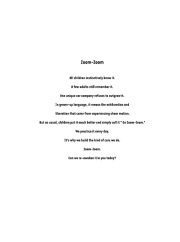 2007 Mazda 5 Owners Manual, 2007 - 1 of 332
2007 Mazda 5 Owners Manual, 2007 - 1 of 332 2007 Mazda 5 Owners Manual, 2007 - 2 of 332
2007 Mazda 5 Owners Manual, 2007 - 2 of 332 2007 Mazda 5 Owners Manual, 2007 - 3 of 332
2007 Mazda 5 Owners Manual, 2007 - 3 of 332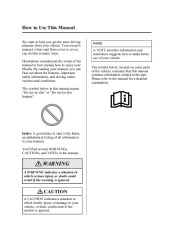 2007 Mazda 5 Owners Manual, 2007 - 4 of 332
2007 Mazda 5 Owners Manual, 2007 - 4 of 332 2007 Mazda 5 Owners Manual, 2007 - 5 of 332
2007 Mazda 5 Owners Manual, 2007 - 5 of 332 2007 Mazda 5 Owners Manual, 2007 - 6 of 332
2007 Mazda 5 Owners Manual, 2007 - 6 of 332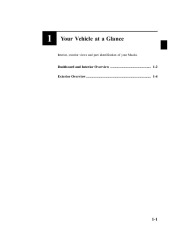 2007 Mazda 5 Owners Manual, 2007 - 7 of 332
2007 Mazda 5 Owners Manual, 2007 - 7 of 332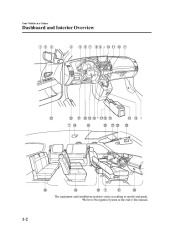 2007 Mazda 5 Owners Manual, 2007 - 8 of 332
2007 Mazda 5 Owners Manual, 2007 - 8 of 332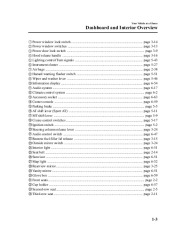 2007 Mazda 5 Owners Manual, 2007 - 9 of 332
2007 Mazda 5 Owners Manual, 2007 - 9 of 332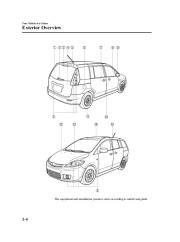 2007 Mazda 5 Owners Manual, 2007 - 10 of 332
2007 Mazda 5 Owners Manual, 2007 - 10 of 332